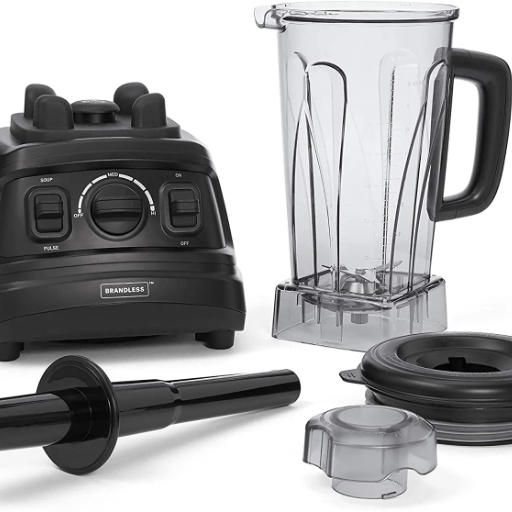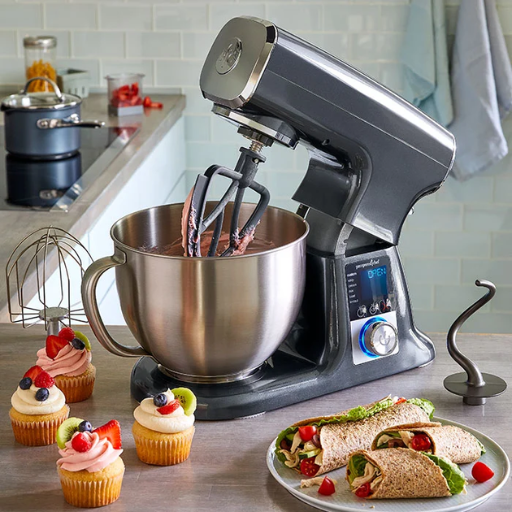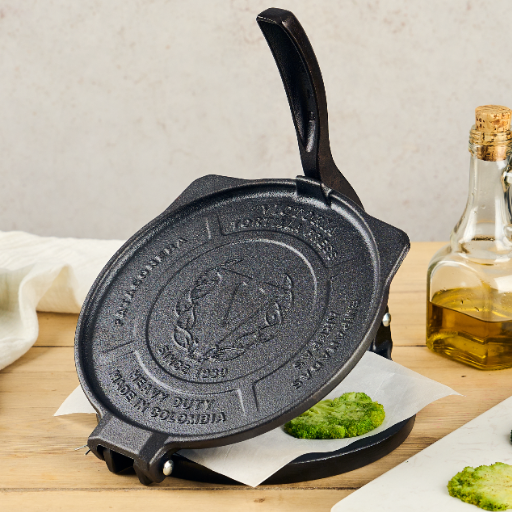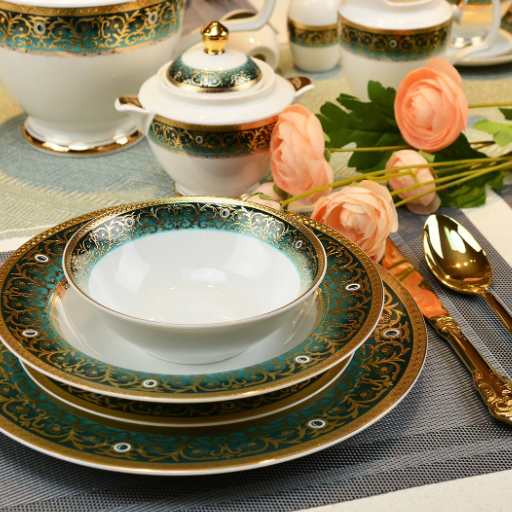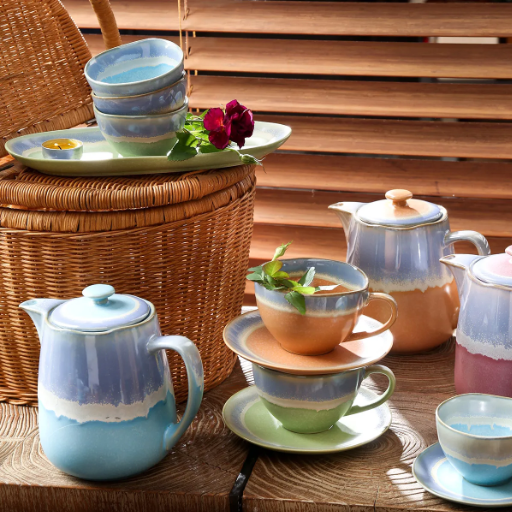The right tools can make a world of difference while cooking. The right tools transform a frustrating experience into a culinary adventure. Having the right tools makes everything from smooth blending of soups, creamy sauces to healthy smoothies an effortless task. With an abundance of options available in the market, selecting the right one for your needs can be difficult. This guide will solve the puzzle and provide everything needed to select the right cooking blender. This blog post will enable you to make the choice that will sharpen your cooking skills and transform your culinary journeys. To explore the complete world of cooking blenders and uncover the essential information that you do not want to miss.
What is a Cooking Blender?
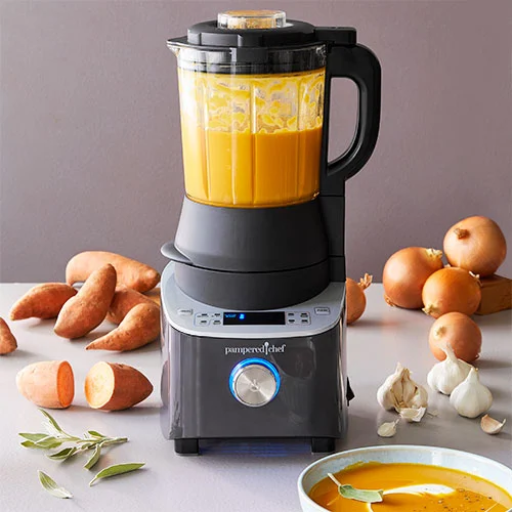
A cooking blender is a unique 3 in 1 kitchen appliance that blends and heats while also cooking ingredients simultaneously. Unlike other blenders that only mix and puree, cooking blenders can make soups and sauces as well as hot drinks like tea directly inside the cooking blender. Most cooking blenders include preset programs for steaming and simmering and even sautéing which makes the blender a great addition for anyone seeking to cook multiple dishes quickly and efficiently.
How does a cooking blender work?
A multiple-task rotary-type heater operates by combining traditional blending with sophisticated heating to cook and prepare different types of foods in one unit. Using the motor of the blender, one can power high-speed blades which will cut dense ingredients into a smooth paste or finely textured ingredients effortlessly. At the same time, the blender’s heating element which is usually situated at the bottom of the jar, cooks or warms the ingredients to precise temperatures. Most multipurpose cooking blenders also have built-in temperature sensors which help in monitoring and maintaining the right temperature along with automatic shut down features that prevents overheating. Further, these devices also come with touch screens or rotary dials which have intelligent interfaces making selecting functions like slicing, stirring, simmering, or sautéing very easy. This combination of intense rotary slicing power with accurate heating makes these modern cooking blenders very effective and their use is not limited to simple as well as sophisticated culinary masterpieces.
What are the benefits of using a cooking blender?
- Time Efficiency
More efficient than traditional blenders, cooking blenders are available as all in one devices which blend, heat, and cook food simultaneously. An great example of how cooking blenders enhance refining time, is soup recipes that require blending ingredients and cooking them on a stove take a great deal of time while with a cooking blender can be accomplished in under half an hour.
- Versatility
From blending to chopping, sautéing, simmering, and even steaming, cooking blenders facilitate myriad tasks simultaneously, making them versatile. This aids in crafting an array of dishes including sauces, smoothies, soups, and purees, all in a single appliance.
- Consistent Results
Achievable adjustable heat functions alongside pre-set controls guarantee attainment of repeatable results. Achieving texture blending as well as delicate sauce simmering is rendered hassle-free with these devices, ensuring professionally cooked meals every time.
- Nutritional Preservation
Gentle heat settings that retain vital components of the ingredients aimed to be blended are often offered by cooking blenders. Research reveals that certain vegetables, when cooked for shorter durations at the right temperatures, experience minimal nutrient loss. These devices seem perfectly tailored for health-conscious individuals.
- Ease of Use
Digital touchscreens and rotary dials make these machines intuitive, equipping beginners with user-friendly devices. The presence of pre-programmed features further streamlines the cooking journey as minimal action is needed for exceptional results.
With precision features and optimal user-experience, blenders have transformed the approach to cooking in contemporary society, enabling the effortless and precise preparation of meals.
How to Choose the Best Blender for Your Needs?
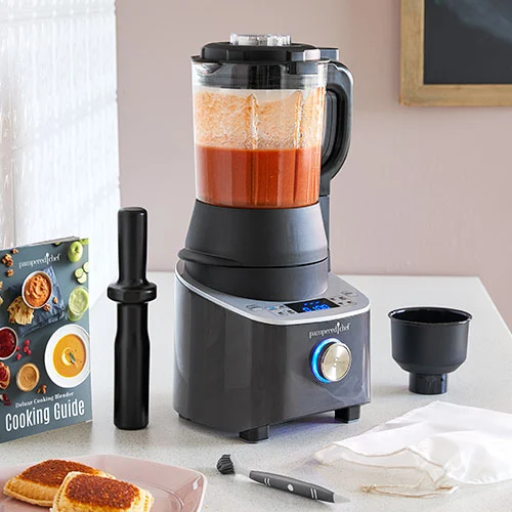
When looking for a blender it is helpful to consider the major features listed below:
- Purpose: Identify the main features you would like the blender to perform. This could include making smoothies, soups, crushing ice or blending hard ingredients which different blenders offers specialized features towards each task.
- Power and Performance: For even the basic tasks you intend to perform it is useful to select a blender with sufficient motor power measured in watts. For heavy duty tasks like crushing ice or making nut butter, super motors that deliver over 1000 watts work best.
- Capacity: Based on the amount you usually prepare select a suitable size of blender. For single servings, personal sized blenders are the right fit but for families and batch prep, larger pitchers work better
- Build Quality and Durability: Select blenders that incorporate heavy duty features like blades made of stainless steel and pitcher constructions made from glass, plastic or tritan.
- Features and Accessories: Look for functionalities that would improve ease of performing tasks such as adjustable speed options, pulse mode, preset programs, personal cups or even food processor attachments.
While considering these factors, you are likely to make the best choice for your needs and picking one that suits your style and frequency of cooking would be easy.
What features should you look for in a blender?
Unlike other appliances, blenders are primarily assessed on their performance and ease of use. Below is the list of features vital for your next purchase.
- Motor Power: As with any other appliance, ice crushing or thick mixture blending have motor power requirements. Simply put, higher wattage means greater efficiency. As an example, higher powered motors will satiable heavy duty applications. If over 1000 watts, the blender can effectively perform demanding tasks. However, 1000 watts is not necessary for light blending where even low powered models can assist easily.
- Blade Design and Material: Blades must be made from high precision stainless steel and designed to maximize blending efficiency while koshering blend consistency. In addition, wing tipped and serrated blades serve the purpose of improving overall performance too.
- Speed and Control Options: Ingredients and their diverse natures demand for tailored solutioning. Having intuitive controls with adjustable speed settings ensures exact blending. Pre-programmed options for a pulsating mode on soup or smoothie blending prove to be very handy.
- Jar Capacity and Material: The overall size of the jar must match the user’s requirements. These days jars are being constructed of glass which reduces staining, lightweight plastic, or Tritan, a clear BPA free durable material.
- Other Add-ons: Functionality can be augmented with add-ons such as personal blending cups, food processor attachments, or even tampers. These multifunctional tools enable the device to serve several other purposes apart from blending.
When you pay attention to the details provided, it becomes easy to spot a blender with appropriate features that can meet your cooking needs without compromising on durability and effortless maintenance.
What is the difference between a countertop and an immersion blender?
|
Key Point |
Countertop Blender |
Immersion Blender |
|---|---|---|
|
Design |
Stand-alone unit with jar |
Handheld with a blending shaft |
|
Portability |
Requires fixed placement |
Compact, easy to move |
|
Size |
Larger, takes up more counter space |
Small, fits in drawers |
|
Capacity |
Higher capacity, suitable for large batches |
Limited by container size |
|
Power |
Typically more powerful |
Less powerful compared to countertop |
|
Versatility |
Suited for smoothies, soups, and beverages |
Ideal for purees, sauces, and small tasks |
|
Ease of Use |
Requires transferring ingredients to jar |
Blends directly in cooking containers |
|
Cleaning Process |
Usually requires washing multiple parts |
Easy to clean with fewer parts |
|
Price Range |
Higher cost due to added features |
More affordable |
|
Targeted Users |
Professionals or families |
Casual or single users |
Top Recipes to Try with Your Cooking Blender

- Creamy Tomato Basil Soup
Pour roasted tomatoes, fresh basil, cream, and spices in a blender to blend them for a smooth, mouthwatering soup. Perfect to warm up your evening.
- Green Smoothie
Add spinach, kale, and banana along with a sprinkle of almond milk and blend to enjoy a creamy energy booster packed with nutrients.
- Homemade Peanut Butter
Use roasted peanuts and add a little salt to cut down on the processed version of peanut butter and blend it into creamy goodness in seconds.
- Butternut Squash Puree
Add butternut squash, butter, and seasoning to blend into a silky, savory side perfect fiends with any dish or can be enjoyed by toddlers.
- Frozen Berry Sorbet
Combine frozen berries with a pinch of honey or desired sweetener and have a quick bite to savour.
The efficiency of cooking blenders is showcased in the recipes as they minimize the time a cook would take to prepare meals.
How to make smoothies with frozen fruit?
Start by choosing fruit combination for your superfood smoothie, it can either be yam or mango with berries, pineapples or even bananas. The goal is to have one to two cups as your base. To make blending easier, liquid components such as water, milk (including almond or oat milk), plant juices, or other derivatives of fruits can be used. Generally speaking, one to one and a half cups would do but it really depends on the amount of fruit, your preferred smoothie thickness and desired consistency. For those wishing to achieve additional nutrients or protein, yogurt, protein powders and nut butters would do the trick. Additionally, chia seeds, flaxseeds and honey can be added for taste and texture. Blend everything on high until smooth and thick. Serving a cold glass gives help retain the nutrients.
What are some easy soup recipes for blenders?
- Creamy Tomato Soup
For the steps of the creamy soup, it is desired to be smooth and savory. You need to combine garlic, fresh roasted tomatoes, vegetable broth, heavy cream, and basil into a blender. After the mixture is blended and smooth pour it into a saucepan and heat it up to your preferred temperature. For that restaurant feeling, feel free to add some salt and pepper to taste.
- Butternut Squash Soup
Cream soups are usually considered rich and can be eaten as appetizers. Butternut squash soups start with steamed or roasted butternut squash and finished off with vegetable stock, stewed vegetables, sautéed onions, a sprinkle of nutmeg. After combining all the items together blend until you reach the desired cream velvety texture. Add additional coconut cream or milk till rich enough for your taste. This recipe is best for well balanced and heart yet light meals.
- Carrot Ginger Soup
Using a blender combine a splash of orange juice, vegetable stock, cooked carrots, fresh minced ginger, and garlic. Blend until the mixture is creamy and smooth. The sweetness from the carrots combined with the zing from ginger create a balanced yet flavorful profile while the orange juice brings in a hint of tang to really bring it all together. Serve hot and enjoy.
- Spinach and Potato Soup
Cooked potatoes, steamed spinach, onions, garlic and some broth make a great base for a fragrant soup. Blend to achieve a silky smooth texture, heat, and serve. Add cream or shredded cheese for an added flavor profile.
These recipes showcase the helpful nature of blenders for fast preparation of nutrient-dense soups for those looking for nutritious meals without sacrificing time or taste.
Maintaining Your Blender for Longevity
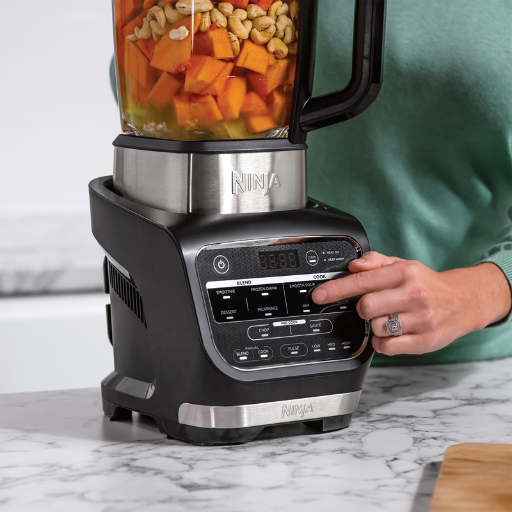
To maintain function and efficiency of a blender for a prolonged period, perform the following steps:
- Clean Immediately After Use
Excess food residue could harden and turn into difficult to clean blockages if not rinsed. Thus, while warm soapy water is best used for rinsing blades, jars, and lids, immediate action is a must post use.
- Avoid Overfilling
Shear stress on the motors and leakage are plausible predictions should the max fill limit be exceeded hence not breaching it is advisable.
- Handle the Blades with Care
Noticeable portions of the shaft mounted blades should be routinely checked for sharpness and damage. Should these concerning factors exist, follow the manufacturer’s directions for parts replacements.
- Check Seals and Gaskets
Gaskets and seals, known to wear out over time, should be monitored to ensure proper seating and no sign of wearing out in terms of leakage prevention.
- Use Recommended Settings
Active usage of a blender should match the designed settings, motors too can strain unnecessarily emerge if used with high RPM while crushed ice blended tasks are performed.
- Store Properly
Residue of dust and moisture can be avoided by storing blenders in dry and clean places.
While optimal safety is maintained alongside performance, these simple practices are best for the blender lifespan. Always look into the user manual for directions crafted according to the brand while keeping maintenance instructions close.
How to clean your blender effectively?
Blanders need to be cleaned properly to sustain hygiene and functionality. These are the step instructions to aid in an effective cleaning regards to blenders. Maintaining its hygiene and functionality simultaneously demands thorough care.
- Disassemble the Components
Start by unplugging your device and removing the lid, blade section and jar. If unsure of specific steps consult the user manual to prevent damage while removing the blender parts.
- Rinse Immediately After Use
To ensure food remains fresh, grab the jars and accessories along with the food processor and rinse under warm water immediately. This habit helps preserve food residue from hardening which helps during the cleaning step.
- Use a Cleaning Solution
To thoroughly clean, fill the blender jar halfway with warm water. Add a few drops of detergent dish soap and securely fasten the lid to the jar. Place the jar on the base and run the blender on low speed for 20-30 seconds. This process efficiently cleans stubborn spots.
- Scrub Stubborn Residue
If any food residues are still stuck, soft bristles like those on a sponge can safely clear the jar. Abrasive materials are a no-go since they scratch and dull surfaces and blades.
- Rinse and Dry Completely
Using warm running water, rinse off any soap residue. It’s important to ensure that the blades and the jar are cleaned thoroughly. Air drying all components entirely is important before reassembling to prevent moisture build up.
- Deep Clean Periodically
Using a mixture of vinegar and baking soda can address odor or stain concerns. Applying the solution to targeted areas and rinsing afterward provides effective removal.
- Inspect and Maintain
Regular inspection of the blade assembly and equiping with new seals should be done for problems with wear or damage. Maintaining these measures ensures optimal performance and safety.
With the outlined systematic methods above, you can ensure that the blender stays efficient and ready for the next use.
What are the best practices for storing your blender?
Correct storage is vital in ensuring the best function of a blender and preventing any damage, especially to electrical parts. While this appliance is important to have in a modern day household, proper storage techniques must be implemented to guarantee safety to its components. The first thing to take note of is always placing the blender in a clean area which is devoid of moisture to allow for smoother transitions. Not only this, but storing the blender in a cool place without any heat and light is important for the electrical components and plastic blades. Lastly, if the blender components can be separated into base, blade, lid, and jar, keeping them separately ensures safety during long term storage. This prevents long term exposure to pressure on the seals or blender blades that comes with locked storage.
To protect delicate parts like the blade assembly, temporary covers are recommended. Additionally, cloths can be used to wrap blades and protect them. For extra protection against dust or damage, it is recommended that blenders be stored in their boxes or in designated containers. Spare gaskets or tamper tools should be stored together with blenders to keep everything organized. Following the above measures will preserve the performance while enhancing the longevity of blenders.
The Advantages of Commercial Blenders

Unlike household models, commercial blenders boast improved power, efficiency, and durability. These machines are perfect for businesses such as cafes, restaurants, and smoothie bars as they can withstand heavy-duty wear and tear. Blending ingredients such as ice, fibrous veggies, and frozen fruits are no match for the powerful motors of commercial blenders. Also, frequent use and wear commercial blenders are constructed with robust materials that include stainless steel blades and reinforced containers. In addition to blending, businesses can perform puree, and grind with froth, which saves on preparation time and increases productivity.
What features do commercial blenders offer?
Like any other piece of equipment in a professional kitchen, commercial blenders also have advanced features aimed to provide efficiency and convenience. One major feature is variable speed control, which allows the operator to change blending speed depending on the recipe which helps with achieving the desired texture and consistency. A lot of high end blenders also come with preset instructions for common tasks like making smoothies, soups or frozen desserts which saves time and is user friendly.
To effectively fragment and blend even the most frozen and rigid of ingredients, modern commercial blenders are equipped with powerful, high-performance motors that operate at 1500- 3000+ watts. Power output like this guarantees strength and efficiency in processing. Additionally, Noise-reduction technology is swiftly becoming the norm, which includes sound enclosures and dampening systems to help minimize noise in busy workplaces. Now, even digital displays equipped with touch interfaces ensure seamless real-time monitoring for intuitive operation of blending cycles.
How do commercial blenders differ from home models?
Home models differ greatly from blenders designed for high-volume food and beverage operations due to the latter’s commercial blenders specific ergonomic. These differences include motor power where commercial units usually operate over 3000 watts, especially meant for prolonged use. The structural components such as blades and couplings are built from industrial grade stainless steel which prolongs the equipment’s durability under heavy-duty usage.
A different difference is the size and construction. Unlike standard blenders, commercial blenders have bigger containers which range from 64 ounces to more than a gallon. This enables them to complete bigger batches of blends. Some models have sophisticated features such as pre-programmed blending cycles and automatic shut-off, which enhance accuracy and save time in busy kitchens. Noise-reduction systems are also a notable feature in many commercial models, designed to minimize disturbances in customer-facing areas.
Reference Sources
-
A study on user preferences and challenges in blender usage – This research investigates user preferences, challenges, and requirements concerning blender usage in Indian households.
-
The blender effect: Physical state of food influences … – This study explores how the physical state of food, influenced by blending, affects perceptions of healthiness.
-
Modification of kitchen blenders into controllable laboratory … – This article discusses the modification of kitchen blenders into laboratory mixers for mechanochemical synthesis.
Frequently Asked Questions (FAQs)
Q: What is the best blender for making smoothies?
A: The best blender for smoothies is typically a high-speed power blender like the Vitamix or a Ninja blender, as they can efficiently blend fruits and vegetables into a smooth consistency.
Q: Can I use a blender to make nut butters?
A: Yes, many professional blenders, such as the Nutribullet or Vitamix, have the power and blade design needed to grind nuts into creamy nut butters.
Q: What features should I look for in a cooking blender?
A: Look for features like variable speed settings, a pulse button, a powerful motor, and a durable stainless steel blade to handle various tasks such as chopping, blending hot soups, and making sauces.
Q: How many ounces does a typical blender pitcher hold?
A: A typical blender pitcher holds between 6-cup (48 oz) to 7-cup (56 oz) capacities, which is ideal for preparing multiple servings of shakes and smoothies.
Q: Is it safe to blend hot foods in a regular blender?
A: While some blenders are designed for blending hot foods, like the Vitamix, it’s important to ensure your blender has a proper lid and is rated for high-temperature liquids to avoid spills and accidents.
Q: Are there handheld blenders available for cooking?
A: Yes, handheld blenders, also known as immersion blenders, are versatile kitchen appliances that can be used for blending soups and sauces directly in the pot.
Q: Can I buy a blender online with free shipping?
A: Many retailers offer blenders for smoothies and cooking with free shipping options, especially for popular brands like Ninja and KitchenAid.
Q: What is the difference between a food processor and a blender?
A: A food processor is designed for tasks like chopping, slicing, and kneading dough, while a blender is primarily used for liquid-based tasks such as making shakes and smoothies.
Q: What is the benefit of a total crushing blender?
A: A total crushing blender is specifically designed to crush ice and frozen ingredients quickly, making it ideal for creating frozen drinks, smoothies, and even for grinding vegetables.
Q: How do I clean my blender after use?
A: Most blenders come with dishwasher-safe components. You can simply rinse the pitcher and lid, or place them in the dishwasher for easy cleaning after use.

